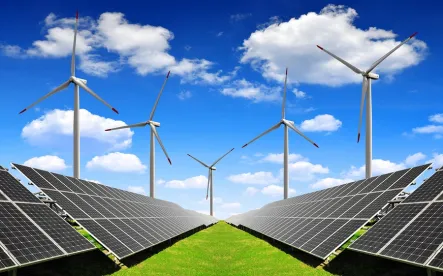It is undeniable that a low carbon transition is taking place. One of the leading forces of this transition is battery storage. Battery storage technology that was, only a couple of years ago, immature and expensive is now beginning to show significant cost competitiveness, particularly over the last year. The most common choice of battery storage technology to date has been lithium-ion. Latest research undertaken by Bloomberg NEF showed that the benchmark levelised cost of electricity (LCOE) for lithium-ion batteries has fallen 35% since the first half of 2018. With technology improving and costs decreasing, significant opportunities exist for utilising battery storage technology on many projects.
A substantial portion of the focus has been on the power sector and the benefits that battery storage can provide, including projects across Australia, the Middle East and the United States of America. Some of the issues being solved by these projects include grid stabilisation and prevention of blackouts: for example, $40 million is reported to have been saved by Tesla’s 100MW/129MWH lithium-ion battery project in South Australia and 20MW energy storage facility linked with Neon’s 309MW Hornsdale wind farm in Adelaide, Australia.
Within the oil and gas sector there are some green shoots emerging of the utilisation of energy storage systems. A couple of examples are as follows:
-
Platform Service Vessels - the GE system is now being implemented in some platform service vessels so as to provide backup power in the event of a power blackout, reserve power in the case of engine failure or to assist in smoothing out peak power fluctuations therefore minimising the need to run additional engines so as to provide continuity of vessels’ operations. These new energy systems are self-contained and only require simple electrical connections to the vessel. Their design not only reduces power losses, but also achieves a reduction in emissions as well as fuel efficiency benefits.
-
Offshore Platforms - Woodside Petroleum’s plans to install this year a 1 MWh battery on Goodwyn A, one of its offshore gas production platforms. The lithium-ion battery will replace one of the existing gas turbines as well as reducing the facility’s reliance on a backup diesel generator thereby reducing emissions as well as operation and maintenance costs.
Significant opportunities in the future though, lie within liquefied natural gas (LNG) projects, given future forecasts across the world. Wood Mackenzie's latest gas report forecasts about 90 million tonnes’ (mmtpa) worth of LNG development projects around the world will reach a final investment decision and start construction over the next two years, and that capital expenditure – for both LNG plant and upstream infrastructure – will total more than US $200 billion between 2019 and 2025. Battery storage can benefit these projects by providing backup or reserve power as part of the turbine configuration within these facilities as well as reducing fuel gas consumption, operation and maintenance costs and carbon emissions.
One exciting development last week in this space was announced by the owners of the Darwin LNG facility in Australia’s Northern Territory. Whilst the project is only entering the front-end engineering and design (FEED) phase for this expansion, this will be the world’s first LNG plant that will integrate battery technology. According to the press release from the majority owners of the Darwin LNG facility, ConocoPhillips, the facility will include a 4MW battery so as to enable it to switch off one of the gas turbines that power the facility and cut its fuel and emissions by around 20 per cent. Whilst the provider of the 4MW battery is not yet decided, the choice appears to be lithium-ion. The current Darwin LNG plant uses five 4MW gas turbines, with one running as backup or “spinning reserve” in the event of failure elsewhere and one in reserve for ship loading procedures. The addition of the battery means that one turbine can be closed down and the remaining three can be run at maximum efficiency.
Not only are the opportunities significant for onshore LNG facilities, but battery storage technology will also be useful for the forecasted growth in floating LNG (FLNG) projects. FLNG is to have a sizeable share of the forecasted growth given its benefits, which are namely, that FLNG technology offers lower production costs, reduced time to first production, and fewer environmental impacts than land-based alternatives. In addition, a potential advantage of a floating facility is that it can be moved relatively easily to an alternative offshore location as the original gas resources decline or economics change. However, one of the constraints within a FLNG vessel is that space is limited and therefore, more compact and lighter equipment to fit the deck space can be very valuable. Many small- to medium-scaled FLNG projects are considering aero-derivative gas turbines: given their high power per unit weight but also their lower gross power output compared with industrial gas turbines, the benefits of these type of turbines combined with battery storage may provide the perfect solution for powering the FLNG vessel and its liquefaction trains within the size and weight design constraints. Even if the industrial gas turbines are determined as the technology of choice within the FEED stage, particularly in relation to the larger FLNG vessels, providing battery storage within the configuration will not only provide greater efficiency and fewer emissions from the turbines, but also optimise the space constraints on the vessel’s deck as it will eliminate the need to have an additional turbine built into the design to provide the required reserve power.
The future for the utilisation of battery storage is bright within LNG projects (including FLNG projects), especially as we continue to see considerable developments regarding improvements in the technology as well as decreasing costs.



 />i
/>i

